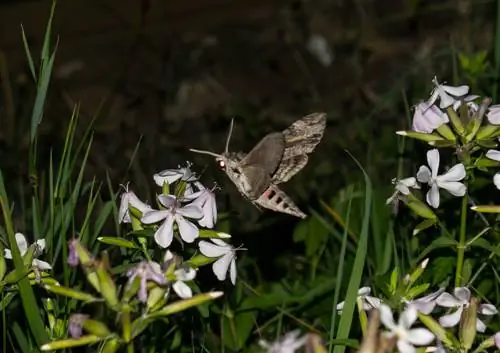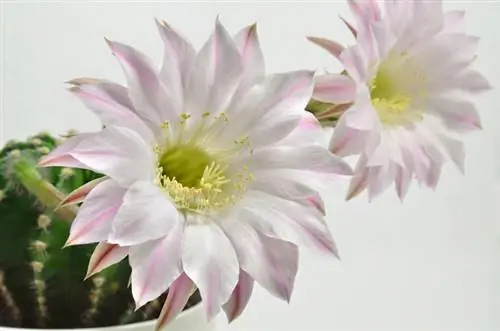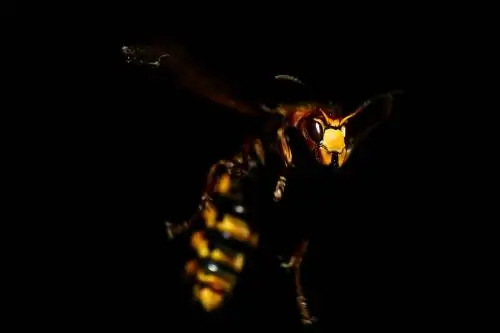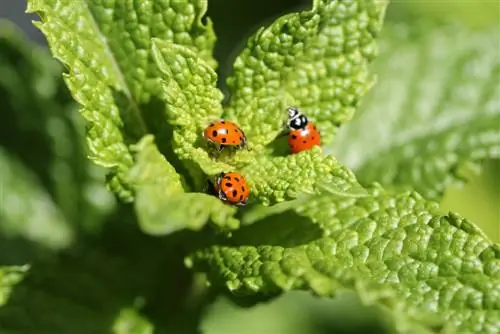- Author admin [email protected].
- Public 2023-12-16 16:46.
- Last modified 2025-01-23 11:22.
Humming bumblebees, bees thick with pollen and the dragonflies at the garden pond: diurnal insects are welcome guests in our green spaces, for which we are happy to provide shelter and special planting. But did you know that around 80 percent of butterflies are nocturnal and are very important for pollinating plants? We would like to dedicate the following article to these animals.
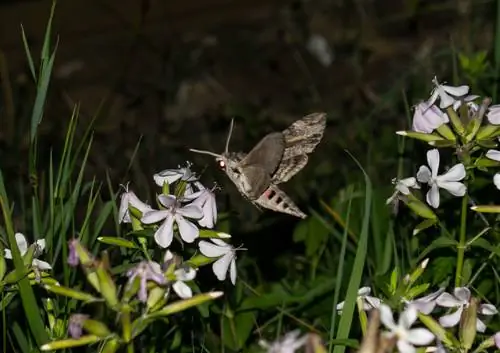
How do you attract night owls to the garden?
To attract night owls to the garden, plant fragrant, fluorescent plant species such as evening primrose, night violet, white campion, phlox or sedum. Also consider caterpillar food staples such as thistles, wild carrots, fennel and nettles.
Nighttime butterfly beauties
Moths are mainly active at dusk or at night. They use the cover of darkness, as there are significantly fewer predators and competitors for food at this time.
In contrast to the attractively colored butterflies, their wings appear rather inconspicuous as they can hide better from enemies during the day. In addition, colorful wings are of no use to them at night as they are used to attract a mate. The female moths therefore use sexual attractants that are perceived by the males over long distances.
Many night owls feed on rotting fruits, which are abundant in the green spaces in midsummer. If you want to observe the animals, you can attract the insects with wine, which you thicken with a little sugar and spread on tree trunks.
The most common moths in our gardens
| F alter | Description |
|---|---|
| Peeped Moth | Very narrow, white wings with black markings. The coloring of the wings is reminiscent of the bark of the birch tree. |
| Esparette rams | Diurnal moth with contrasting wing coloring with red spots, which gave the ram the popular name “blood droplets”. Towards the evening they gather in large numbers on individual, prominent plants. |
| Frost tensioner | On the road until the end of December. Female frostbite moths have no wings, only short stubs, while males have normally developed wings. |
| Gamma Owl | This night owl can be found almost everywhere. The butterfly can even often be observed on balcony plants and in urban green spaces. |
| Peacock Moth | One of the most beautiful and largest moths. While the males are active during the day, the females only fly at night. The Lesser Peacock Moth is mainly found in open areas. |
| Beautiful Bear | One of the few moths that you can also observe during the day. The wings are strikingly colored. You can discover this butterfly in light and moist forest areas. |
| Pigeontail | This nimble butterfly can be found wherever there are nectar-rich forage plants, such as alfalfa or clover. They often feast on balcony plants such as fuchsias, petunias or phlox. The gray-brown upper side of the forewings and the orange-brown hindwings, which are dark on the outer edge, are characteristic. |
Attracting moths to the garden
Night owls are attracted to fluorescent or strongly scented plant species. The flower color is predominantly white, yellow, violet or reddish, as these tones reflect the invisible, short-wave light.
If you want to give moths a home, you should plant the following plants in your garden:
- Evening Primrose
- night violet
- White Campion
- Flameflower
- Sedum
- Garden honeysuckle
- mullein
- Soapweed
- Borage
Tip
Don't just think about nectar plants, but also about the caterpillars' food source. Make space for thistle species, wild carrots, fennel and nettles and do a lot to protect the increasingly rare moths.

